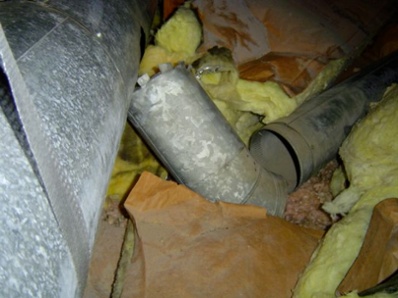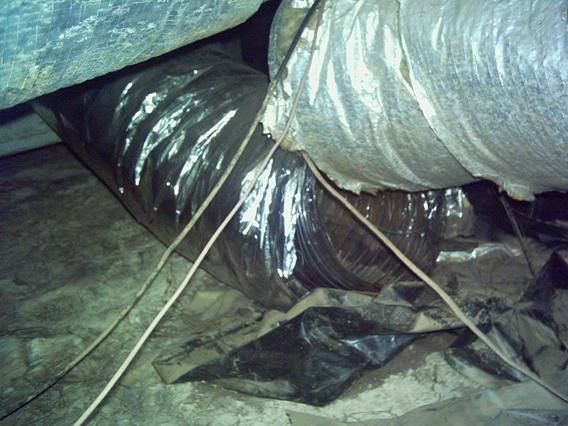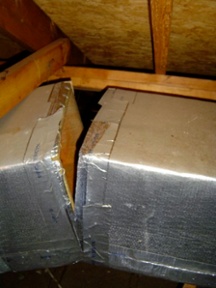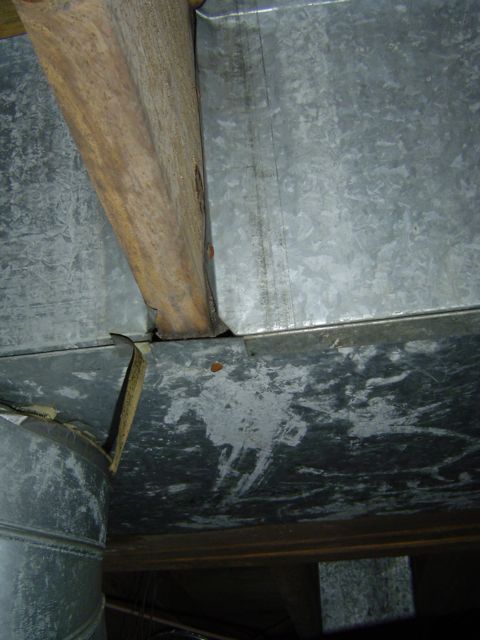The Four Types of Duct Leakage

It’s Friday afternoon and time for some fun, so let’s take a look at the four types of duct leakage.
It’s Friday afternoon and time for some fun, so let’s take a look at the four types of duct leakage.
1. Rigid Duct. Made of sheet metal, this type of duct can have very good airflow because it’s nice and smooth inside. They also have to be designed and planned out before installation, so the installer can’t do bad things with them as easily as they can with the next type (flex).
Unfortunately, installers can make other mistakes with them, like, say, forgetting to attach them with screws. When the duct insulation is all that’s holding your ducts together, as was the case above, you have a major problem.
2. Flex Duct. As its name implies, this type of duct is flexible. It was first invented to reduce noise by being installed for the last few feet of a duct run in commercial buildings. It’s easy to install and modify. It’s cheap. Because of the greater air resistance inside, it should be a little bigger than a piece of rigid duct installed in the same place.

Oops! Sometimes they fall off.
3. Ductboard. This one’s made of rigid fiberglass with a foil facing on one side. Mostly they’re used for plenums (the box that other ducts attach to at the air handler) and trunk lines (a long duct that runs out from the plenum).

Dang! They fall apart, too. What the heck is going on here?!
4. Site-built Ducts. The panned joist return is the most common of these. The HVAC contractor takes a piece of sheet metal and runs it across a joist cavity (or two), attaches a duct to the bottom, and puts a vent/grill above it in the floor or wall.

Nobody ever bothers to seal them up, though. Those gaps you see above allow the heating & cooling system to suck in musty, moldy, damp crawl space air whenever the system runs.
So there you have it, the 4 types of duct leakage. It doesn’t really matter what the ducts are made if nobody bothers to seal them up. Sealing your ducts can have a huge impact on your home energy efficiency, comfort, indoor air quality, and durability.
